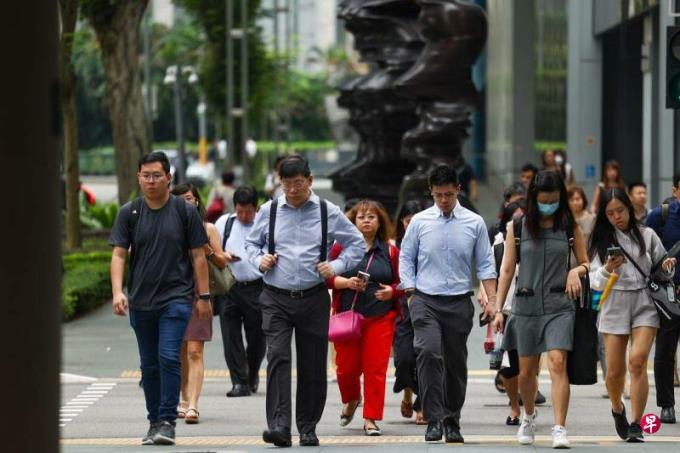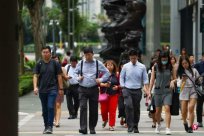
The preliminary estimated data released by the Ministry of Trade and Industry on Tuesday (January 2) showed that the Singapore economy increased by 1.2%last year, and the fourth quarter increased by 2.8%year -on -year, higher than the third quarter of the third quarter.It is worth noting that the manufacturing industry, which has been shrinking for four consecutive quarters, twisted by 3.2%year -on -year in the fourth quarter.However, whether this momentum can continue this year, it is full of variables.
Singapore's economy mainly depends on external needs, and slowing external growth is the biggest risk that affects the economic outlook for Singapore.The current global economic situation is full of uncertainty and challenges, the situation of geopolitical tensions has continued, and China's economic situation has been undulating. The Red Sea crisis since December last year is likely to be an obstacle to the continuous recovery of trade and manufacturing.Premier Li Xianlong pointed out in the new year's words that the external environment is expected to be less conducive to Singapore's security and prosperity in the next few years.The situation may also weaken investors' confidence in the region, which will affect Singapore's economic growth.
The most important economic threat this year is that the conflict between Israel and Hamas spread to Garha.The Economic Cooperation and Development Organization at the end of November last year predicts that the growth rate of the global economy this year will slow to 2.7%, which is the lowest year since 2020; when this prediction is made, the Red Sea crisis has not yet occurred.
The global supply chain faces new risks due to the Red Sea crisis. On the last day of last year, a Singapore -registered container freighter sent a signal for help to the US military when sailing in the Red Sea.Subsequently, the U.S. military sank three Yemenhasis, and all the staff on board were killed.This is the first time that the U.S. military has killed the Hussean armed forces since the outbreak of the Red Sea crisis.On the first day of this year, Iran, who supported Hamas, sent destroyers to enter the Red Sea through the Manda Strait, which exacerbated the tension of this important global maritime waterway, and a larger -scale war was on.
In addition, Sino -US relations that are warm and cold may also affect the recovery of Singapore's manufacturing industry.Although the relationship between the two parties has been heating slightly since the US President Biden and Chinese President Xi Jinping met in San Francisco last November, the United States did not seem to relax in the advanced manufacturing industry in China.The Dutch chip equipment manufacturer ASML said on Monday (January 1) that based on the US export restrictions, the Dutch government has canceled the export license of the company's export of some chip manufacturing equipment to China.The United States has continuously put pressure on China's semiconductor industry, and it may have a significant impact on the development of the global semiconductor industry.Semiconductor is the focus of Singapore's manufacturing, and the expected export -driven recovery may be disappointing.
The third risk is China's economic situation.Following Evergrande, China has more housing companies closed down, housing prices have fallen, and rotten tail buildings have increased. Although the Chinese government issued a series of stimulus policies, the market response is not as good as expected.The fiscal deficit that relying on land selling is continuously expanding, and it can only be held again and again. A comprehensive debt crisis is in the process of brewing, and it is inevitable to impact the global economy once it happens.This is a development that global investors and decision makers have paid attention to this year.
The external environment is full of challenges that may affect the local employment market.The third quarter labor market report released by the Ministry of Human Management in mid -December shows that due to the reorganization of more enterprises or facing business and cost pressure, the number of local layoffs in the third quarter increased by 910, reaching 4110;Falling a quarter, from 87,900 at the end of June to 78,400 in September.Prospective data points to the demand for labor or further decline. It is only 42.8%to recruit employees in the next three months, which is the lowest since the collection of this data in December 2020.
Although the overall inflation rate and core inflation rate of November last year fell, due to the increase in consumption tax, the water and electricity costs also increased, this year's inflation rate was expected to rise, and the pressure on prices rose.However, when the Chinese people face the economy, they must avoid being too pessimistic, otherwise the economy will be stifled by fear.Enterprises and employees should maintain competitiveness and response capabilities. Enterprises continue to promote business transformation, and Chinese people should continue to improve their skills and open up new job opportunities.In the coming new fiscal year budget, the government is expected to give priority to maintaining economic competitiveness, supporting enterprises and employees to improve and transform, and continue to help local families reduce the burden on living.



